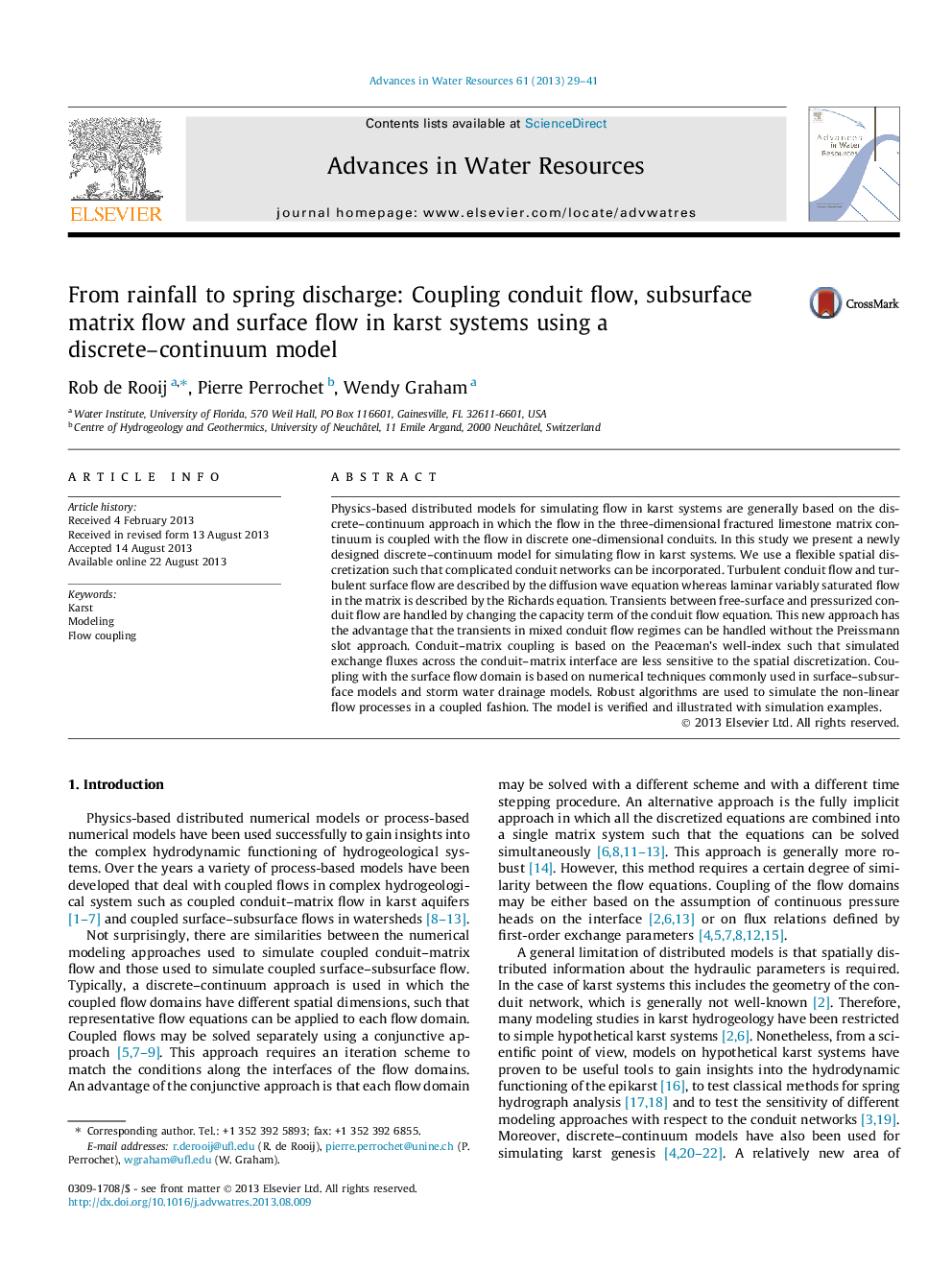| Article ID | Journal | Published Year | Pages | File Type |
|---|---|---|---|---|
| 4525565 | Advances in Water Resources | 2013 | 13 Pages |
•A discrete–continuum model for simulating flow in karst systems is presented.•The model couples flow between matrix, overland, conduit and channel domains.•The model accounts for variably saturated conditions in the subsurface.•Conduit–matrix coupling is based on a projection well-index.
Physics-based distributed models for simulating flow in karst systems are generally based on the discrete–continuum approach in which the flow in the three-dimensional fractured limestone matrix continuum is coupled with the flow in discrete one-dimensional conduits. In this study we present a newly designed discrete–continuum model for simulating flow in karst systems. We use a flexible spatial discretization such that complicated conduit networks can be incorporated. Turbulent conduit flow and turbulent surface flow are described by the diffusion wave equation whereas laminar variably saturated flow in the matrix is described by the Richards equation. Transients between free-surface and pressurized conduit flow are handled by changing the capacity term of the conduit flow equation. This new approach has the advantage that the transients in mixed conduit flow regimes can be handled without the Preissmann slot approach. Conduit–matrix coupling is based on the Peaceman’s well-index such that simulated exchange fluxes across the conduit–matrix interface are less sensitive to the spatial discretization. Coupling with the surface flow domain is based on numerical techniques commonly used in surface–subsurface models and storm water drainage models. Robust algorithms are used to simulate the non-linear flow processes in a coupled fashion. The model is verified and illustrated with simulation examples.
